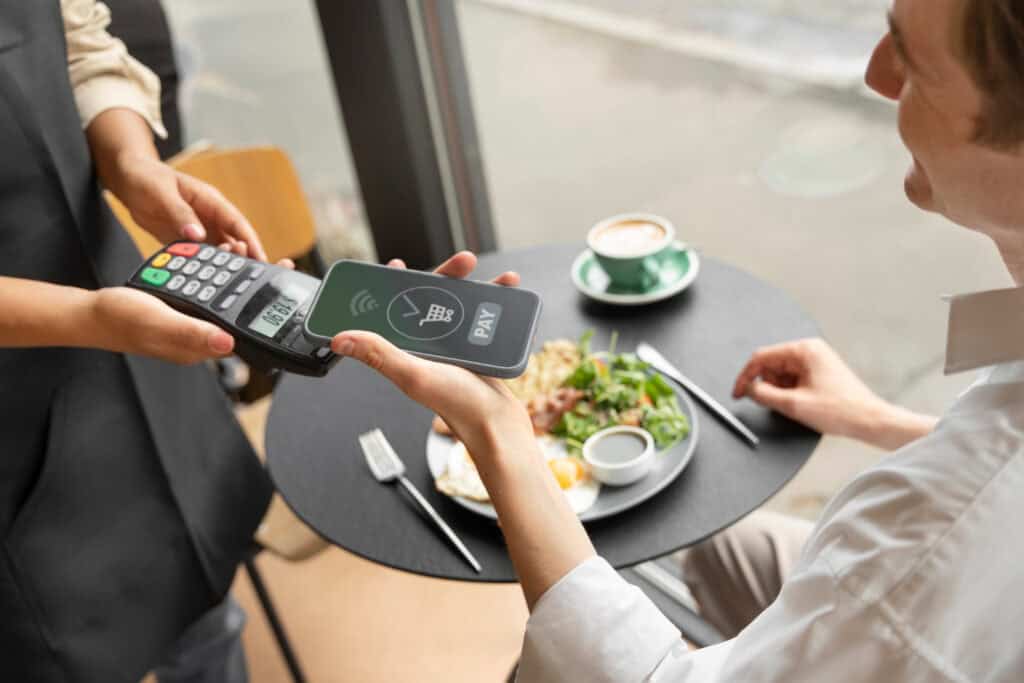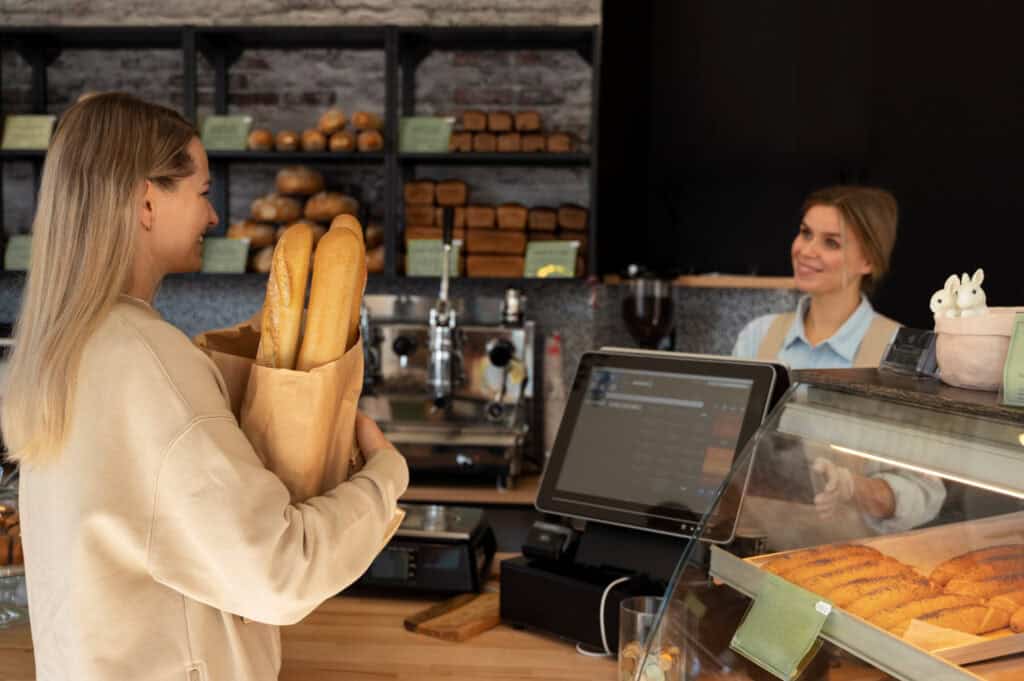We may earn money or products from the companies mentioned in this post. This means if you click on the link and purchase the item, I will receive a small commission at no extra cost to you ... you're just helping re-supply our family's travel fund.

The neighborhood cash-only counter once felt like a rite of passage. Bring small bills, know the routine, keep the line moving. That ritual worked when everyone carried cash and a register tape was enough bookkeeping. Then the world shifted. Phones became wallets, checkout moved to a tap, and owners realized that time, accuracy, and data are not luxuries. They are what keep a tight-margin business alive and steady through slow Tuesdays and slammed weekends.
Here is what this really means. Moving to cards and apps is not a tech fad. It is an operational decision that touches speed, ticket size, staffing, theft, compliance, and even menu strategy. The math has improved, the tools have matured, and the guest expectation is set. If a place resists, it leaves money on the sidewalk. If a place adapts, it wins minutes back every shift, and minutes are revenue.
Why The Shift Is Happening Now

Small restaurants live or die on throughput, and digital payments shave seconds off every interaction. That sounds minor until the lunch rush hits and the line reaches the door. Faster transactions lower the perceived wait, which keeps impulse orders intact and tempers calm. Owners see the effect in table turns and in the staff’s breathing room between spikes.
The habit change is real. People bring one card and one phone, not a roll of bills. They expect clean taps and instant receipts, and they judge the whole visit by how smooth the exit feels. A clunky cash handoff makes the final moment of service feel slow, even if the food is great. Once that impression forms, it sticks.
Cost predictability helps. Processing fees used to be murky and layered with odd surcharges. Today, flat or near-flat plans let owners budget with clarity and compare providers without guesswork. A known cost beats a messy cash routine that hides losses in errors and time.
Digital payments open new channels. Online ordering for pickup, scheduled orders, and curbside handoffs expand the radius of who can buy and when. That increases revenue without expanding the dining room. It also levels the flow across the day, which keeps the kitchen sane.
The Math Owners Actually Care About
Interchange fees matter, but average ticket lift matters more. Tap-to-pay and app ordering make add-ons effortless, so guests say yes to sides and dessert without friction. That incremental spend compounds quietly across every shift. Over a month, it is the difference between covering rent and cutting hours.
Cash is not free to manage. Someone counts drawers, reconciles mistakes, buys change, and drives deposits. Those are paid hours and risk hours, and they add up. Remove the bank run and you reclaim time for prep, training, or a cleaner close. The savings are tangible and recurring.
Chargebacks scare owners, but they are manageable with process. Train staff to itemize, photograph high-ticket catering pickups, and use chip or tap to authenticate. Keep a clear refund policy and a paper trail through the POS. Disputes drop, and when they occur, you have evidence ready.
Reporting is the quiet engine. Category sales, hourly heatmaps, and tip distribution appear with a few clicks. That informs labor scheduling, menu engineering, and promo timing. Decisions move from gut feel to grounded data without hiring an analyst.
Guests Changed Before Menus Did
A guest who cannot pay the way they prefer often orders less or leaves altogether. That is not a branding statement. It is a missed sale in plain sight. Accepting cards and apps reads as basic hospitality, like clean water and working bathrooms. It signals that the place respects time.
Digital acceptance multiplies touchpoints. Order-ahead protects the lunch break, curbside helps parents with kids in car seats, and scheduled pickup fits shift workers. The same kitchen now serves more use cases with no new tables. That is real leverage.
What The Upgrade Looks Like Behind The Counter
Modern terminals are built for speed and abuse. Staff learn the flow in an hour, and the register finally matches the pace of a fry station on a Friday night. Void controls and role logins reduce gray-area comps without creating tension. The close becomes a checklist, not a negotiation.
Two quick wins stand out. Add tap readers at every service point and enable online ordering for pickup only to start. That brings most of the upside without the chaos of third-party delivery on day one. Measure, adjust, then expand if the line holds up and the kitchen keeps tempo.
Menu programming cuts waste. Required modifiers prevent missed allergens, forced choices guide portioning, and eighty-sixes sync to the front so staff stop selling items that are gone. Fewer remakes mean happier guests and steadier margins.
Data closes the loop. Hourly sales show when to drop extra fries, which shifts need another barista, and which items deserve the end-cap photo. Small changes compound. Over six weeks, the operation feels calmer and the bank account looks healthier.
The Risks And The Myths
Fee creep is real if no one watches the statement. Owners should audit monthly, request an interchange-plus breakdown, and renegotiate or switch when terms drift. Providers compete hard for restaurants. A clean offer is a signal of respect and reliability.
The idea that cashless feels unwelcoming misses the guest’s reality. Most people simply want to tap and go. Keep a minimal cash lane during a transition, post the policy clearly, and pair it with a prepaid gift card option. You keep flexibility without losing speed.
Compliance, Security, And Taxes
PCI compliance sounds complex, but certified hardware encrypts at the reader and reduces scope. Role-based permissions make comps, voids, and refunds traceable, which curbs internal loss without drama. When rules live in software, staff follow them because the path is obvious.
Tax accuracy improves overnight. Sales tax applies correctly across dine-in, takeout, and catering, and end-of-period reports export cleanly to accounting. Year-end stops being a scavenger hunt through shoebox receipts. It becomes a tidy packet your accountant will actually smile at.
Keep It Inclusive While You Modernize

Not everyone has a card or a bank app. Keep a small, clearly labeled cash option, especially in neighborhoods with lower banking access. Offer store gift cards that can be bought with cash and used digitally later. Inclusion should be practical, not performative.
Explain the change plainly. A sign that promises faster lines, better accuracy, and more ways to pay will land better than policy legalese. Add the update to the website and socials so no one gets surprised at the counter. Respect is part of service.
Train with empathy. Show staff how to help a guest who is new to tap or wants a printed receipt. The tone at the register sells the policy better than any post. When the process is calm, the guest feels taken care of.
A Practical Playbook For Switching

Announce, pilot, then roll out. Start with tap-to-pay and pickup-only online ordering for two weeks. Track average ticket, speed of service, and remake rates. If numbers move the right way and staff feel steady, add scheduled orders or limited delivery where margins make sense.
Pick a provider for clarity, not hype. Favor transparent fees, deposit timing that fits your cash flow, and support you can actually reach on a weekend. Build a simple staff script for common questions, and rehearse it. The smoother the explanation, the shorter the line.